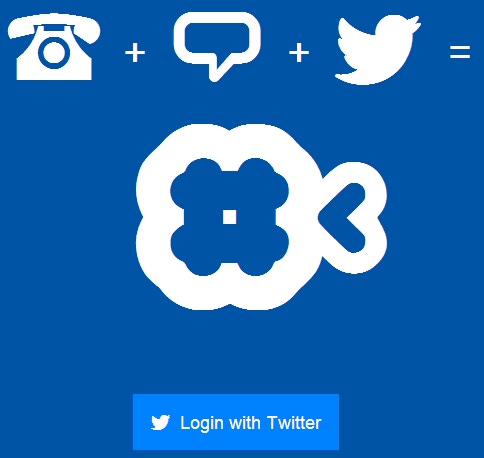March 12, 2013

By Camille Mendler
As an analyst exploring new digital services, I try to practice what I preach.
I designed Informa’s Telecom Cloud Monitor with Caspio. I use Evernote for project and information management. My interactions are logged on Salesforce.com. I like Skype, and I’m warming to Lync (my 9,000-employee firm just switched to Microsoft Office 365 – hooray!).
And yes, I’m using Twitter, LinkedIn and experimenting with a bunch of other tools.
But it’s the sheer flatulence of email that I find particularly irksome. Voicemail comes a close second. You’ll know that, if you know me. Find me via Twitter DM.
One Tweet to rule them all
So, what if I could kill several ‘birds’ with one stone? What really got me thinking was @Twelephone, dubbed a ‘next-generation social telephone’ (check this demo), using HMTL5 WebRTC. Point, click and voilà – you’ve initiated an encrypted P2P video or voice call via Twitter.
Now I’m not a lawyer, but I do track my time. And clients get first dibs. So I could:
Make Twitter my central interaction console
Define priority contact groups with @Twelephone
Manage all my work interactions in one place
Use an API to log these interactions, time and contacts in Salesforce.com
Stop trying to remember the voicemail password on my Cisco IP phone
O tempora, o mores
Of course, I don’t want to be available, immediately, all the time. They don’t pay me that much.
And I don’t always have my makeup on to take that video call (je suis une femme d’un certain age). But companies now flying the WebRTC flag like @Twelephone, Plivo, TokBox et al are going to change things. And I do hope it’s fast.
Not least, let’s not kid ourselves that email is a fit tool for collaboration, particularly in business. It’s really a weapon for indiscriminate broadcast (check your spam settings), or a cover-my-butt tool for corporate compliance.
Let’s hope WebRTC achieves one thing: To remind us what ‘interaction’ really means in the digital economy.
Read more about:
DiscussionYou May Also Like






.png?width=300&auto=webp&quality=80&disable=upscale)


_1.jpg?width=300&auto=webp&quality=80&disable=upscale)


.png?width=800&auto=webp&quality=80&disable=upscale)